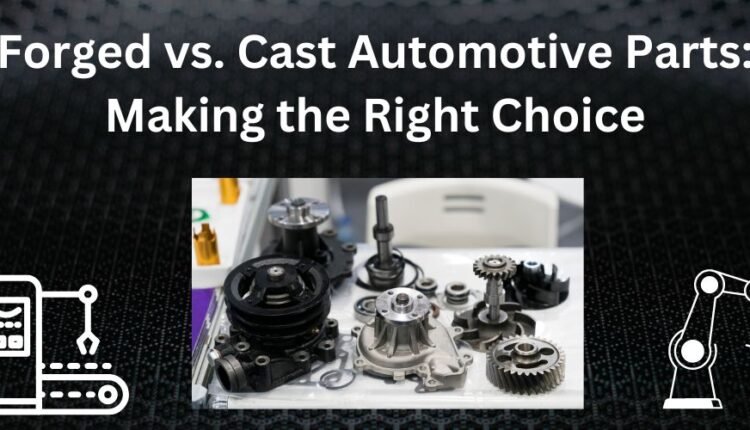For manufacturing automobile parts, two commonly known processes come in mind; namely Forging and Casting. Both the methods have different processes, advantages and eventually produces parts with unique characteristics. With this article, you will get to know the difference between forging and casting, along with understanding which method is the best for manufacturing automotive parts.
What is Forging?
Forging is a method of manufacturing the parts where the metal is given its required shape by applying compressive force. A metal named billet is first heated at a high temperature, then is hammered, and finally is pressed to generate the desired shape by using a die. It is a complex process which results into automotive parts that are of superior strength, is durable, and has resistance to any impact.
What is Casting?
Casting involves relatively easier process compared to forging method; hence this method can produce components in larger quantities and lower cost. While manufacturing automotive parts through casting method, molten metal is poured into a mould, after which is allowed to solidify there. This casting can be done through different methods like sand casting, investment casting and die casting, where each of these methods have their own advantages and limitations.
Forged Vs. Cast Automotive Parts
When it comes to automotive parts, both forged and cast manufacturing have their own importance and uses. The forged automotive components or parts, are specifically known for their durability, and superior strength. Hence, forging process is ideal for manufacturing critical automotive components like connecting rods, steering knuckles, and crankshaft. The forged manufacturing process aligns the grain structure of the metal and hence, it results in improvement of mechanical properties and resistance to any fatigue failure.
While critical components can be manufactured through forging process, casting process has its own advantages; where are cost-effectiveness and design flexibility. To achieve complex shapes and intricate design, casting process is more suitable. You can design automotive parts like engine blocks, transmission cases, and cylinder heads. However, cast processed parts might show fewer mechanical properties as compared to the forged components.
Which is Better, Casting or Forging?
Identifying which process will suit the best for your product is simple. It is dependent on specific requirement of the automotive component. For manufacturing high-stress components that are subjected to heavy loads and extreme conditions, then forging process is preferred and for less critical parts, less complex processes and lower cost, casting process is more suitable option.
Conclusion
Finally, both forging and casting have their own vital roles in manufacturing different automotive parts. Depending on the use of the automotive part, you can finalize the kind of manufacturing process suitable. Each process offers its own set of advantages as well as limitation. Forged parts are known for its strength, durability and fatigue resistance, which makes them ideal for critical automotive components in high-performance vehicles.
While, on the other hand, cast parts offer cost-effectiveness and design flexibility, which makes them suitable foe a wide range of applications. Ultimately, choosing the process is dependent on the specific requirements of the automotive application and the desired balance between performance, cost, and complexity.


Comments are closed.